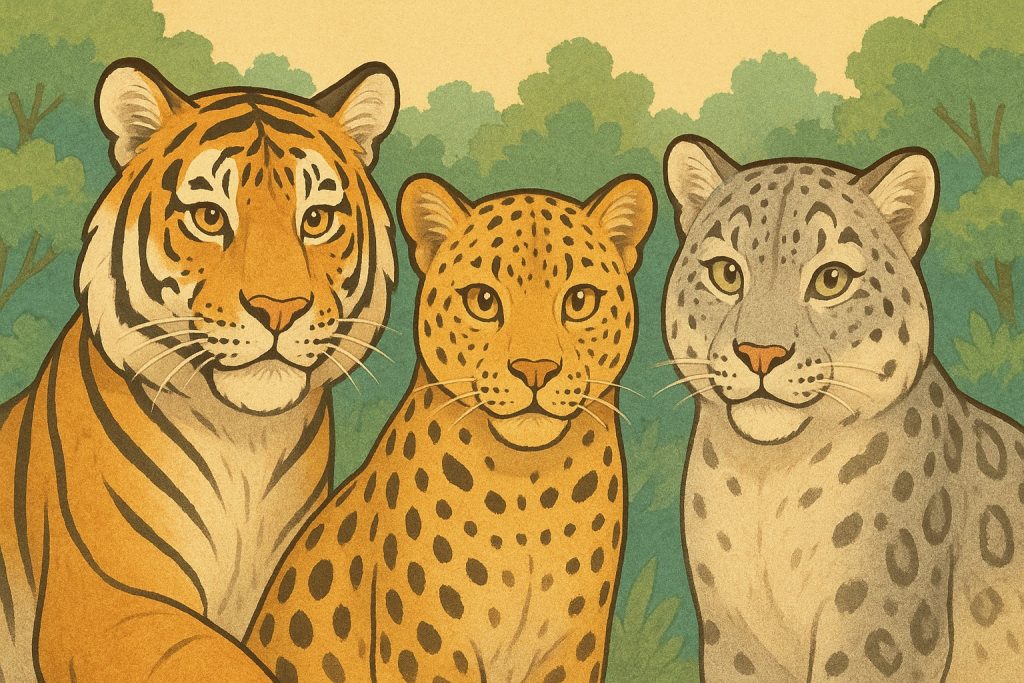Big cats are among the most majestic and powerful animals on Earth. Yet, many of them are facing extinction due to habitat loss, poaching, and climate change. Tigers, leopards, and snow leopards, in particular, are under serious threat. Their survival depends on coordinated international efforts, conservation programs, and increased public awareness.
Tigers: Kings Under Threat
Once roaming much of Asia, tigers have lost over 90% of their historic range. Today, only around 4,000 remain in the wild. Their populations are most threatened by:
- Poaching for skins, bones, and traditional medicine
- Deforestation and expanding human settlements
- Human-wildlife conflict as tigers attack livestock
Conservation programs like India’s Project Tiger and international efforts under Global Tiger Recovery Program aim to double wild tiger numbers through habitat protection, anti-poaching patrols, and community involvement.
Leopards: The Elusive Survivors
Leopards are highly adaptable and can live in forests, grasslands, and even near cities. Yet they are also under threat, especially:
- The African leopard, hunted for its beautiful coat
- The Persian leopard, with fewer than 1,000 in the wild
- The Amur leopard, critically endangered with only a few dozen individuals left
Despite their stealthy nature, leopards often come into conflict with humans and are victims of illegal trade. Conservationists are working to protect corridors between fragmented habitats and improve coexistence with local communities.
Snow Leopards: Ghosts of the Mountains
Snow leopards live in the remote mountains of Central Asia and are known for their thick fur and long tails. With fewer than 7,000 left, they face:
- Climate change, shrinking their cold mountain habitat
- Poaching for fur and bones
- Retaliatory killings by herders protecting livestock
Programs like the Global Snow Leopard & Ecosystem Protection Program are working to create protected areas and support herder communities with livestock insurance and education.
How We Can Help
- Support wildlife organizations working to protect big cats
- Avoid buying animal products, especially illegal wildlife goods
- Promote eco-tourism that benefits both animals and local people
- Raise awareness about the importance of predators in ecosystems
Big cats are top predators and help maintain the balance of ecosystems. Losing them would affect not just the animals they prey on, but entire landscapes and biodiversity.
Glossary
- Habitat loss – The destruction or alteration of the natural environment where a species lives.*
- Poaching – Illegal hunting or capturing of wild animals.*
- Biodiversity – The variety of life in a particular habitat or on Earth as a whole.*
- Human-wildlife conflict – Disputes between humans and animals, often over land or livestock.*
- Eco-tourism – Responsible travel to natural areas that helps conserve the environment and support locals.*


